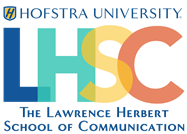Editor’s note: Part four of five.
Que Pasa, Long Island?
Episode 4: Smart Growth and Development – Another Way to Keep People Out?
Description: The Secatogue Nine felt like a part of the Farmingdale community, but were consistently marginalized on several fronts. And while they received support from a certain sector of the local activist community who welcomed them and helped organize in collaboration with them to address issues related to the day laborer site, the larger plans being hatched in the village were developing without their input. How does the community want the downtown to look? This was a question on many people’s minds in Farmingdale as the confrontation with the day laborers was picking up steam. Village officials had resurrected a proposal to redevelop the buildings at Secatogue Avenue as part of their larger revitalization plan for Farmingdale. So as Farmingdale considered plans for revitalization at the turn of the 21st century, officials and residents had to confront the mix of economic, social and political issues involved in what form redevelopment would take.
Would it provide opportunities for higher-quality affordable housing? Or would it force poorer residents out, in a process that echoed the gentrification of many New York City neighborhoods?
Would it lead to integration among all sectors? Or, would it lead to the expulsion of immigrant families who had thought of Farmingdale as their home?
Answers to these questions depended on the extent to which the immigrant residents living at 150 Secatogue would be considered, much less invited to participate, in the planning process.
In this episode, we examine how the revitalization approach of Farmingdale officials did not adequately take into account the concerns of the local Latin American immigrant community.









